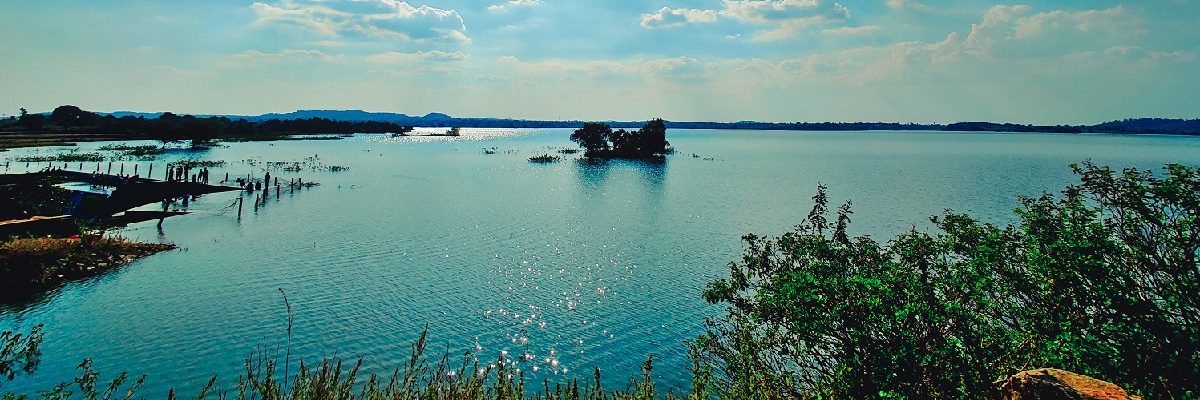Sustainable Solutions are Key to Building a Water-Secure Future

By Tikender Singh Panwar
Watersheds come in families, nested levels of intimacy. On the grandest scale, the hydrologic web is like all humanity —– Serbs, Russians, Koyukon Indians, Amish, the billion lives in the People’s Republic of China—–its broadly troubled, but it’s hard to know how to help. As you work upstream toward home, you’re more closely related. The big river is like your nation, a little out of hand. The lake is your cousin. The creek is your sister. The pond is her child. And, for better or worse, in sickness and in health, you’re married to your sink.
–Michael Parfit, National Geographic
It is clear that the world is running out of fresh water, thanks to the unsustainable model of development followed over the last few decades that has not just induced irreversible changes in climate but has also brought an existential crisis.
The normal cycles of nature have been disrupted by climate change and massive abuse of water systems across the globe. Many governments are abdicating their responsibility of protecting and conserving water systems, and are handing over the management to the private sector. However, this corporate control is a threat to the well-being of humans.
MAKING THE INVISIBLE VISIBLE
‘Groundwater: making the invisible visible’ is the theme for World Water Day 2022 which falls on the 22nd of March. The United Nations has called for enhancing knowledge exchange and collaboration, thereby increasing awareness of the importance of groundwater conservation.
Why is groundwater important? It provides 50 percent of the drinking water worldwide, 40 percent of the irrigation water for all agricultural activities, and 33 percent of the total water required for the industry.
There are finite supplies of freshwater. Assumptions that humanity would never run out of freshwater are inherently false. The available fresh water amounts to less than one-half of 1 percent of all water on earth. The rest is seawater, and water locked up in the polar ice, atmosphere, and soil.
The relationship between water and the ecosystems that sustain it must change, and the sooner this is achieved, the better. Groundwater plays an important role in sustaining ecosystems and in enabling human adaptation to climate variability and change. It is the major source of water in many cities around the world, including most of the Indian cities.
India has 18 percent of the world’s population, but only 4 percent of its water resources. It is, therefore, one of the most water-stressed nations in the world. Come summer, water becomes a commodity ‘as precious as gold’ in some Indian cities, according to a World Bank report. Indeed, it does, but the solutions that are offered are based on further commoditising of water, alienating the people further.
Whether water is a right or a need is a question that requires considerable attention. The advocates of private control over water – particularly the ‘Washington Consensus’, which is a set of broadly free-market economic ideas – term water as a need and not a right. This need can be fulfilled either by the State apparatus or by a private entity. The difference is that if it is fulfilled by the State, the citizens accrue a right, whereas, under a private entity, it is just a matter of demand and supply.
The Indian government also follows the same dictum of water being a need, though not that explicitly. The story here is also quite worrisome. According to a report, 30 Indian cities will face a grave water crisis and may eventually run out of water altogether. Thirty-one percent of urban households, mostly in unauthorised colonies, do not have piped water connections. According to a Centre for Science and Environment study, 48 percent of India’s urban water supply is dependent on groundwater, and in seven of the 10 most populous cities in the country, the groundwater has fallen significantly over the past decades.
According to the Government of India’s Jal Jeevan Mission (JJM) dashboard, out of 18.93 crore households in 2019, only 3.23 crore (17 percent) had piped water connections. The JJM works on principles adopted from the Telangana safe drinking water project, Bhagiratha. Both Bhagiratha and JJM have salient features that are very appealing. Both talk about providing water to every household and women being able to escape the drudgery of collecting and carrying water, among other promises. However, both need to ensure that the leakage and loss of water that occur during supply and distribution are reduced and that these losses are not be linked to the user charges on water.
GOVERNANCE OF WATER
In India, especially in urban centres, governance or management of water is key to ensuring the protection of aquifers, ecosystems and to providing an adequate quantity of potable water. Most of the cities and their fresh water bodies, bauris, and springs are polluted. With their influence, cities then poach on the peri-urban areas and then further to the rural hinterland. This is an unsustainable model. Gurgaon and the national capital region of Delhi are prime examples of such an emerging disaster. Not only have their water bodies (urban commons) been usurped for the greed of real estate development, these have also been contaminated over time.
The second issue in governance is that parastatals are running the show in alliance with large corporations, who design urban water supply and sewage schemes in such a way that after some time, they just give up. Instead of being planned and implemented in consultation with the people, these schemes are designed with high capital costs, which in the long run becomes unsustainable.
Take, for example, the water supply scheme in Leh town in Ladakh, about which I interacted with the town’s water officials. Despite our repeated interventions that the water supply scheme should be designed in consultation with the people, it has been designed by professionals without taking people’s wisdom and voices into consideration. The town’s water supply scheme aims to lift water from the Indus River, instead of tapping glacial water. The Indus water scheme would cost around Rs 100 crore, with the operational costs touching nearly Rs 5-6 crore per year. The water tapped from the glacier would have flowed with the force of gravity and would not have cost more than Rs 10 crore and with minimal operational costs. Despite such an alternative, Leh opted for the water lift scheme from the Indus. This will pass the burden of maintenance onto the people, even though they did not have any role in approving the scheme.
Another example is the decision of a prominent research institute in Shimla city, Himachal Pradesh, to pay for the water supplied by the town water supply system, which itself gets water transported from a distance of more than 70 km at a heavy cost. The institute has chosen to do this, despite having a huge rainwater harvesting tank of its own.
The third example is about the catchment areas of Himayatsagar and Osmanasagar lakes in Hyderabad city. These are supposedly gravity reservoirs that supply drinking water without a single rupee required to be spent on pumping. “Currently, the government is spending Rs 2-5 per kilolitre (KL) to get water from these twin reservoirs, while it is spending Rs 150 per KL to get it from the Godavari River,” Donthi Narsimha Reddy, a renowned environmentalist, stated. However, the real estate lobby in the city wants to claim the buffer area around the reservoirs, which are part of the urban commons, to maximise its profits.
There have to be clearly demarcated roles in water management. The onus should be on parastatals or city governments, preferably the latter, to ensure adequate quantity and quality of potable water, in addition to protecting and conserving water sources. It is also important that cities look beyond their boundaries and work to rejuvenate water resources to ensure a water-secure life for their people.
Tikender Panwar is the former Deputy Mayor of Shimla.



